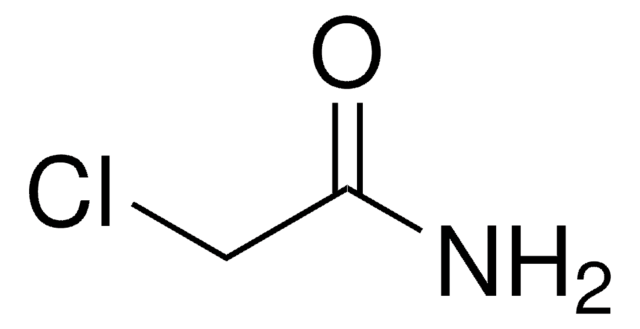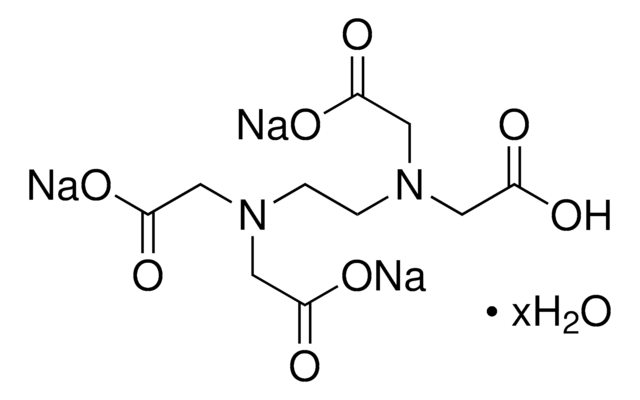C0267
2-Chloroacetamide
≥98%
Sinónimos:
Chloracetamide, alpha-Chloroacetamide
About This Item
Productos recomendados
vapor pressure
0.05 mmHg ( 20 °C)
Quality Level
assay
≥98%
form
powder
mp
116-118 °C (lit.)
SMILES string
NC(=O)CCl
InChI
1S/C2H4ClNO/c3-1-2(4)5/h1H2,(H2,4,5)
InChI key
VXIVSQZSERGHQP-UHFFFAOYSA-N
¿Está buscando productos similares? Visita Guía de comparación de productos
Categorías relacionadas
Application
- 2-Amino-4-chloroquinolines via o-alkylation of 4-chloro-1H-quinolin-2-ones and subsequent Smiles rearrangement.
- 2-(Formylaryloxy)acetamides by reacting with hydroxybenzaldehydes in the presence of potassium carbonate as a base.
- Biarylamine derivatives via aluminum triflate-catalyzed direct amination of benzhydrols.
signalword
Danger
hcodes
Hazard Classifications
Acute Tox. 3 Oral - Repr. 2 - Skin Sens. 1
Storage Class
6.1C - Combustible acute toxic Cat.3 / toxic compounds or compounds which causing chronic effects
wgk_germany
WGK 2
flash_point_f
338.0 °F
flash_point_c
170 °C
ppe
Eyeshields, Faceshields, Gloves, type P3 (EN 143) respirator cartridges
Elija entre una de las versiones más recientes:
¿Ya tiene este producto?
Encuentre la documentación para los productos que ha comprado recientemente en la Biblioteca de documentos.
Los clientes también vieron
Artículos
In this study, we developed a rapid trypsin digest kit that, at elevated temperatures, yielded reliable, reproducible results in less than 2 hours on a wide variety of substrates for mass spectrometry.
Nuestro equipo de científicos tiene experiencia en todas las áreas de investigación: Ciencias de la vida, Ciencia de los materiales, Síntesis química, Cromatografía, Analítica y muchas otras.
Póngase en contacto con el Servicio técnico












